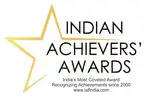CATI Research: Its Strength Against Common Research Challenges
The strengths of quantitative research are known to many. Among the numerous types of quantitative market research, CATI or Computer-Assisted Telephone Interviewing is a method leading global market research consulting companies swear by. CATI is a powerful quantitative market research method, offering a robust solution to various research challenges. CATI’s structured, quick, and automated approach provides significant advantages in collecting high-quality data, making it an essential tool for quantitative research companies. In this blog, we will explore the strengths of CATI research against common research challenges.
What is CATI Research?
Computer-Assisted Telephone Interviewing (CATI) Research is a survey method where interviewers use a computer system to guide and assist them through the data collection process over the telephone. CATI research is widely used in quantitative market research, healthcare studies, and various fields where systematic and reliable data collection is essential. The interviewers follow a pre-designed script or questionnaire displayed on their computer screen. It helps streamline the process and ensures consistency across interviews. Here’s a breakdown some of the aspects of the CATI research process:
- Computerized Questionnaires: Interviewers work with a computer that displays the survey questions. It standardizes questionnaires across different interviews and respondents. It enhances the consistency and reliability of the data.
- Real-Time Data Entry: As respondents answer questions, the data is entered directly into the computer system. The real-time data entry phase reduces the risk of errors and allows for immediate processing and analysis of responses.
- Automated Skip Patterns: CATI systems can handle complex skip patterns and branching logic. If a respondent's answer renders certain questions irrelevant to their experience, researchers can skip subsequent questions or follow a different path, the system automatically guides the interviewer accordingly.
- Data Validation and Quality Control: CATI systems often include features to validate responses and flag inconsistencies or errors. It helps to maintain high data quality and accuracy, as issues can be addressed immediately during the interview.
- Remote Data Collection: Interviews are conducted over the phone, allowing for data collection from a wide geographic area without the need for in-person interaction, thus making it easier to reach diverse populations and gather data from various locations.
- Enhanced Monitoring and Supervision: CATI systems enable supervisors to monitor calls in real-time, providing support and ensuring adherence to survey protocols. It helps maintain high standards of data collection and interviewer performance.
15 Benefits of CATI Research: The Strengths of this Quantitative Research Method
Computer-Assisted Telephone Interviewing (CATI) offers numerous advantages that make it a preferred method in quantitative research across various industries, including:
- Automated Routing and Skip Patterns: CATI systems can handle complex survey designs, including skip patterns and branching logic. It means that respondents are only asked relevant questions, reducing the length of the interview and enhancing the overall efficiency.
- Standardization of Interviews: CATI ensures that every respondent is asked questions in a consistent and relevant order, which enhances the reliability and consistency of the data. The scripted responses, routing, and automation reduces the risk of interviewer bias and errors.
- Built-In Data Validation: CATI systems often include real-time validation checks that flag inconsistent or out-of-range responses, allowing interviewers to address potential issues immediately. It leads to cleaner, more accurate datasets.
- Adaptability to Complex Surveys: CATI is highly adaptable to various types of surveys, including those with complex structures, multiple modules, or conditional questions. The system can adjust the flow of questions based on previous responses, making it suitable for diverse research needs.
- Geographic Reach: Since CATI involves conducting interviews over the phone, it allows researchers to reach respondents across wide geographic areas without the need for physical presence. It is particularly advantageous for studies that require a broad, diverse sample.
- Lower Operational Costs: CATI reduces the need for physical materials, travel, and logistics. The use of centralized systems also cuts down on the costs associated with manual data entry and processing.
- Scalability: The system can handle a large number of respondents efficiently, making it cost-effective for large-scale studies. The more interviews conducted, the lower the cost per interview.
- Interactive Experience: CATI provides a more interactive experience than self-administered surveys. Interviewers can engage with respondents, clarify questions, and probe for more detailed answers, leading to rich data collection.
- Higher Response Rates: The personal interaction involved in CATI can lead to higher response rates compared to other methods like online surveys, especially among populations that may be less comfortable with digital interfaces.
- Immediate Feedback: Supervisors can provide immediate feedback to interviewers, helping them improve their techniques and address any issues arising during the interviews. This continuous quality control is vital for maintaining high standards in data collection.
- Multilingual Capabilities: CATI systems can support multiple languages, allowing interviewers to conduct surveys in the respondent's preferred language. This feature is particularly beneficial in multicultural or international research, where language diversity is a factor.
- Overcoming Literacy Issues: Since the interview is conducted over the phone, respondents do not need to read or write. This makes CATI a suitable method for populations with varying literacy levels, ensuring everyone can participate in the survey.
- Automated Question Delivery: The computer system in CATI guides the interview and reduces the likelihood of interviewer bias, where the interviewer might unintentionally influence the respondent's answers.
- Objective Data Collection: CATI’s structured approach helps to maintain objectivity throughout the data collection process, as interviewers are less likely to deviate from the script or inject their own opinions into the interview.
- Secure Data Handling: CATI systems are designed to handle data securely, with features such as encryption and secure storage. It is crucial for maintaining the confidentiality of respondent information and ensuring compliance with data protection regulations.
Common Research Challenges And How CATI Can Help Overcome Them
Now that you understand the benefits of CATI, let’s discuss how this method can help companies overcome common market research challenges:
Challenge 1: Sample Representativeness
One of the primary challenges in market research is ensuring that the sample is representative of the population being studied.
CATI’s Strength
CATI helps address this challenge by allowing large samples; even respondents in remote locations. The quick data collection from the computerized system can help manage large sample sizes and apply sampling weights to adjust for imbalances, ensuring that the sample reflects the broader population accurately.
Challenge 2: Data Quality and Accuracy
Maintaining data quality and accuracy is crucial for reliable research results.
CATI’s Strength
CATI excels in this area through its real-time data entry and validation features. Additionally, automated data checks and validation rules minimize the risk of human error, enhancing the overall accuracy of the data collected. It helps monitor the interview’s progress and its direction in real-time.
Challenge 3: Respondent Engagement and Retention
Engaging respondents and ensuring their continued participation throughout the survey can be challenging.
CATI’s Strength
CATI systems address this by providing interviewers with real-time feedback and routing prompts to maintain engagement. Interviewers can use adaptive questioning techniques and skip-logic or branching techniques to ask relevant questions to each respondent, keeping them interested and invested in the survey. It can help minimize dropout rates.
Challenge 4: Speed of Data Collection
Speed is a critical factor in data collection, especially when time-sensitive information is needed.
CATI’s Strength
CATI offers significant advantages by streamlining and automating a large part of the interview process and enabling rapid data entry. The automated system facilitates quick data processing, allowing researchers to gather and analyze large volumes of data in a shorter time frame than traditional methods.
Challenge 5: Cost Efficiency
Cost is yet another challenge in market research.
CATI’s Strength
While some research methods can be costly, CATI provides a cost-effective solution. The efficiency of the computerized system reduces the need for extensive manual data entry and minimizes errors, which can otherwise lead to additional costs. Furthermore, CATI helps researchers conduct interviews remotely. It thereby helps lower operational costs associated with travel and logistics, making it a budget-friendly option for quantitative descriptive research.
Challenge 6: Geographic and Demographic Flexibility
Geographic and demographic diversity can pose challenges in research, particularly when conducting studies across different regions or populations.
CATI’s Strength
CATI helps researchers overcome these challenges by enabling them to reach a broad audience regardless of location. The telephone-based approach allows for the inclusion of diverse geographic and demographic groups, ensuring a comprehensive understanding of the target population.
Challenge 7: Addressing Language and Literacy Barriers
Language and literacy barriers can impact the effectiveness of research, especially in multicultural or multilingual settings.
CATI’s Strength
CATI systems address these barriers by supporting multiple languages and providing interviewers with the option to switch languages as needed. Additionally, the computerized script can be designed to accommodate different literacy levels, ensuring that respondents can easily understand and participate in the survey.
Final Word
The strengths of quantitative research lie in its ability to help collect numerical data. Such data can be beneficial for generalizing results to a large population. Quantitative research thus proves effective for assisting businesses in the collection of data to identify patterns, trends, and correlations that are crucial for making informed decisions. Such an empirical approach ensures that the conclusions drawn are both reliable and generalizable, making it an invaluable tool in navigating the complexities of business and markets. CATI research is a useful quantitative research tool that can help overcome common research challenges, including data quality, data collection complexity and speed, and high research costs. However, CATI is a specialized research method that needs expert supervision. That’s why it is crucial to collaborate with market research agencies with a proven track record and a top notch CATI system. Unimrkt Research is a reliable quantitative research agency that can significantly enhance the quality of data collected through market research. With ISO20252 and ISO 27001 certifications under our belt, we're one of the leading market research firms that conducts global market research in over 22 languages. If you are interested in leveraging the strengths of CATI or any other quantitative market research, call us at +91-124-424-5210 or email at sales@unimrkt.com, or fill out our contact form, and we will take it from there.
Quick Enquiry
Customer Service, We Make it Better
Recent Posts
- How to Clarify and Align Your Research Goals for Maximum Impact
- Mining Valuable Data: The Driving Force for an Effective Growth Marketing Strategy
- Speaking the Customers Language: 7 Tips for Meaningful Qualitative Research
- Creating Value for Investors: The Benefits of Primary Market Research
- Utilizing Closed-Ended Questions For Quantitative Market Research
- Capturing the Changing Interests of Millennials Through Qualitative Research
- Refining Unit Economics with Robust Quantitative Market Research
- A Concise Guide to Quantitative Market Research
- 3 B2B Market Research Trends That Could Shape 2024
- Eyes on 2024: Changes That Might Disrupt the Healthcare Industry This Year
- Cracking the Language to Make Survey Questions Inclusive in 2024
- Attracting Investors: How Market Research Can Solidify Your Case
- Solid Foundations: Ways to Enhance Trustworthiness in Qualitative Research
- What Makes CATI Research So Effective?
- Moderator Qualities That Improve Qualitative Market Research
- 5 Consumer Market Trends That Will Define 2024
- What are the strengths of quantitative research?
- How to Make Your Partnership with Primary Market Research Firms Fruitful
- A Quick Guide to Harnessing the Strengths of Quantitative Research
- Advice from Your Research Partner: Don't Compromise Quality on Online Surveys













